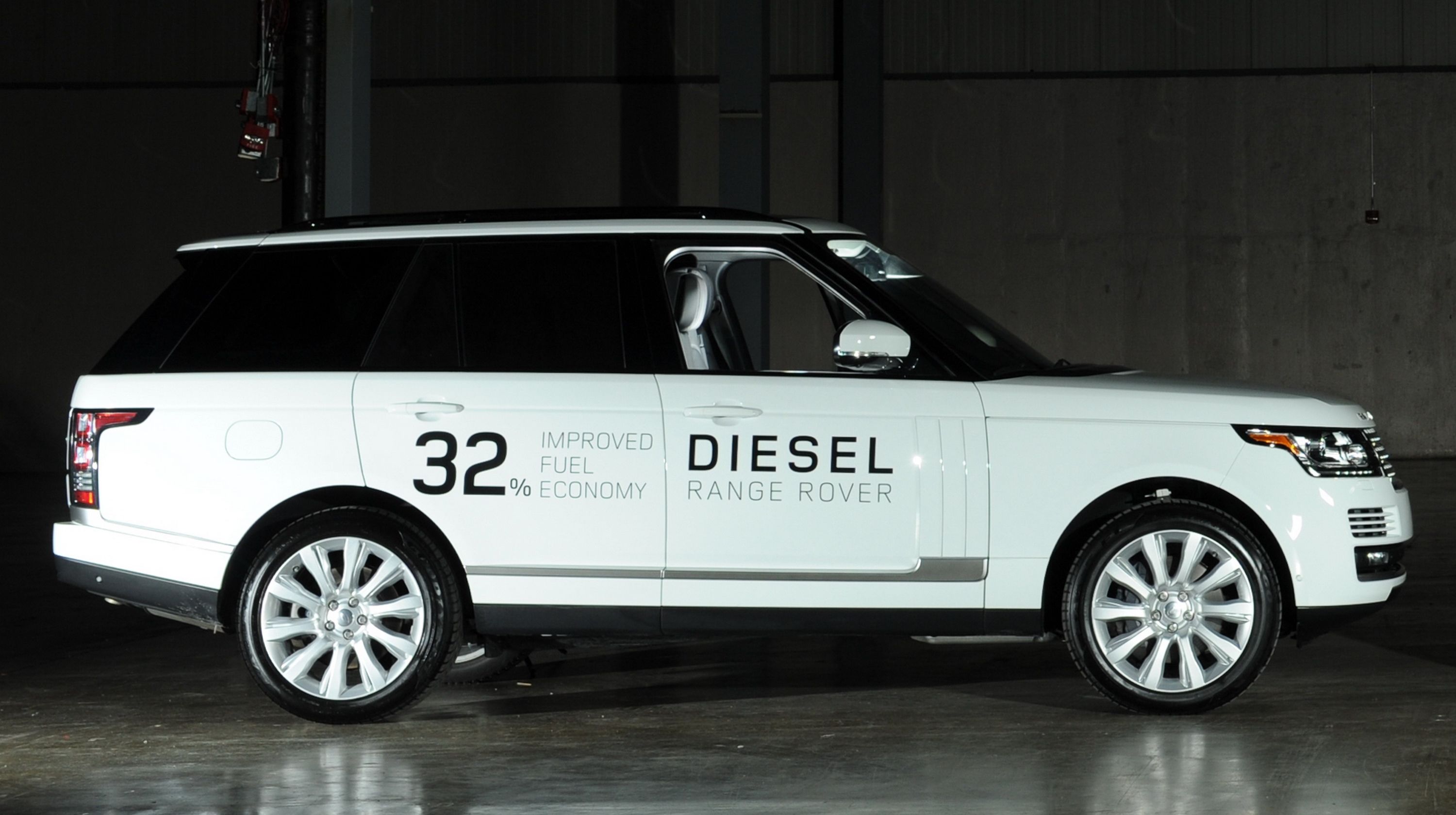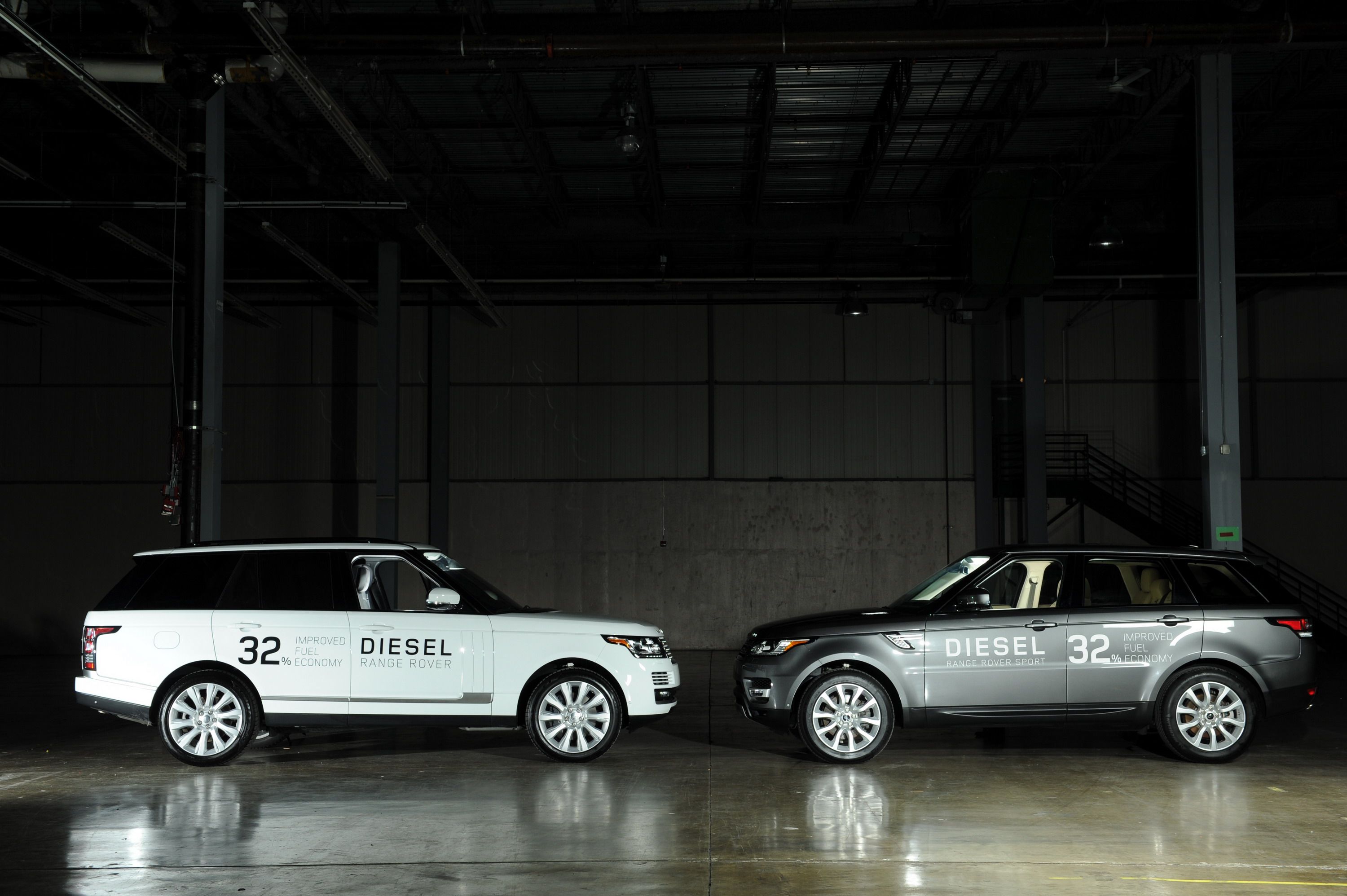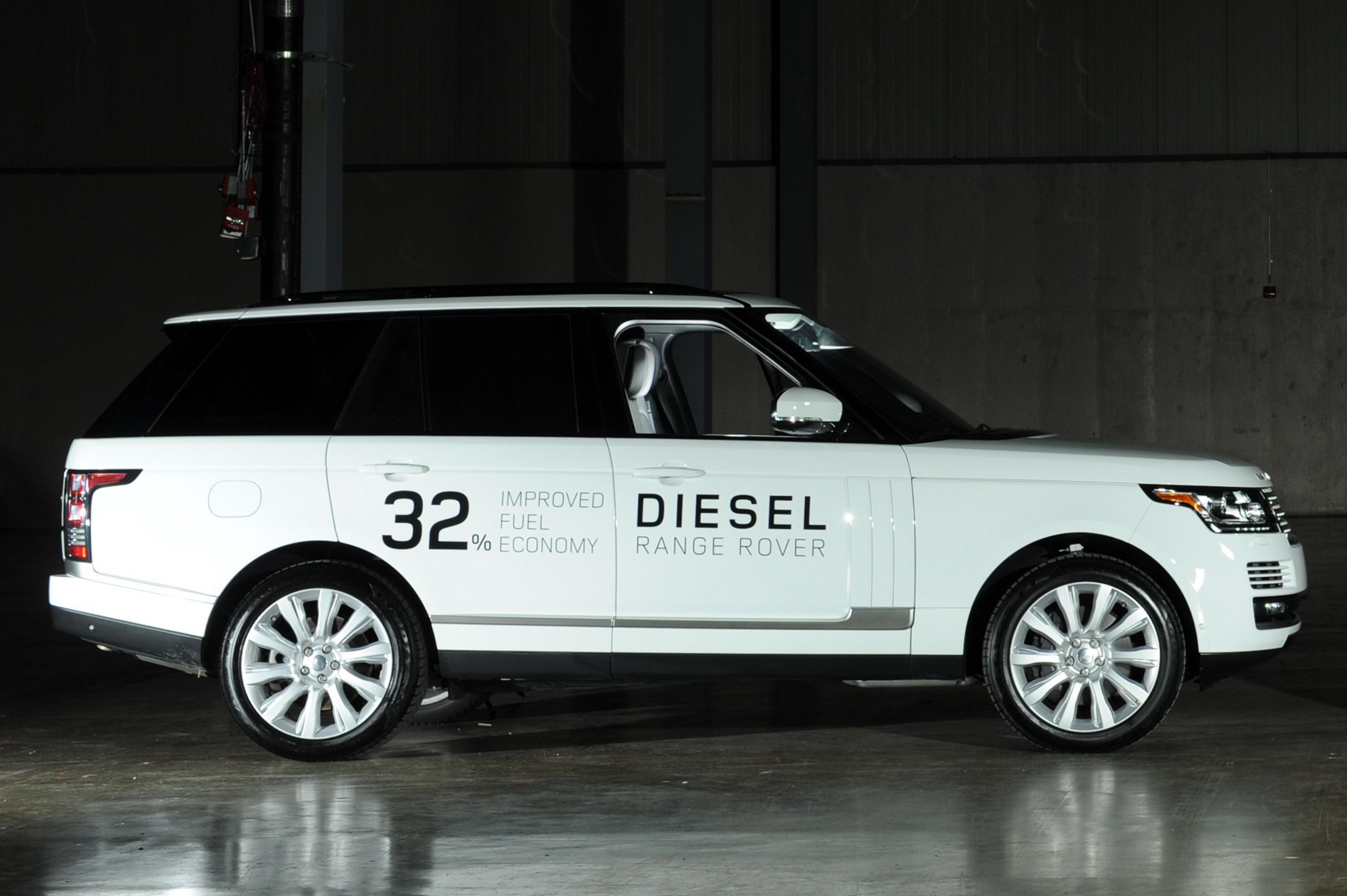Land Rovers->ke46 have long had diesel engines beneath their engine bays, yet thanks to negative public opinion of diesels->ke1917 and the stringent emissions standards, the compression-ignition engines were never offered in the U.S. – that is, until now. Land Rover has announced its plans to bring its Td6 V-6 turbodiesel to the States inside both the Range Rover->ke469 and the Range Rover Sport.->ke4087
The move comes amidst a changing marketplace that is becoming more accepting of diesels and their advantages, and the improvement of emissions and exhaust treatment system.
Though the diesel engine is new for the U.S., the Range Rover it powers is not. Its last redesign came in 2013 when Jaguar Land Rover moved the full size SUV to a lightweight aluminum chassis. A new outward design carries many cues from classic Range Rovers while incorporating plenty of new style. The interior was fitted with the same treatment while getting an upgrade in materials and quality.
The 2016 Range Rover Td6 will still retain its legendary off-road->ke4846 prowess thanks to its Terrain Response system, dynamic suspension, and unsurpassed water fording depth. In fact, the new torquey diesel should only strengthen the Range Rover’s abilities off the beaten path.
Improvements are of course made to the Range Rover’s fuel efficiency and overall driving range. Compared to the gasoline V-6, the diesel offers a 32-percent improvement to fuel efficiency, bringing the estimated mpg numbers to 22 city, 28 highway, and 25 combined mpg. Total driving distance for one tank of fuel is extended to a bladder-busting 658 miles.
Click past the jump for the full review
2016 Land Rover Range Rover Td6
- Make: Array
- Model: 2016 Land Rover Range Rover Td6
- Engine/Motor: V6
- Horsepower: 254
- Torque: 440 @ 1750
- Transmission: 8-speed electronically controlled automatic
- [do not use] Vehicle Model: Array
Exterior
Despite the new diesel, the Range Rover still wears the same exterior. That’s not a bad thing, though. The SUV is one of the classiest and best dressed in the segment. Its character lines hark back to its historical past while still looking modern and vogue. A high-mounted air intake integrated into the hood affords the Range Rover its 35-inch fording dept, while extra seals in the door jams keep water out.
Interior
Supercharged V-8 Autobiography shown
Like the outside, things inside are very familiar. Things, however, are slightly different. A new acoustic windshield has been added along with more sound absorbing insulation. The new materials ensure no extra noise emanates into the leather-lined cabin.
In fact, Land Rover boasts the diesel engine is so smooth and the sound materials so absorbent, that participants in several test-drive clinics had no idea they were driving diesels during the 30-minute test loops.
Drivetrain
Supercharged V-8 Autobiography shown
And now for the news. The all-new 3.0-liter V-6 turbodiesel is constructed from Compact Graphite Iron with a deep-skirted, cross-bolted design that includes a structural, one-piece aluminum oil sump. The combination gives the block added strength and lightness over aluminum and conventional iron blocks, respectively. The block’s strength allows for a more compact design within the engine bay.
Scrubbing the exhaust is a Selective Catalytic Reduction system that uses Diesel Exhaust Fluid (DEF) to reduce NOx levels, helping the engine pass the U.S.’ strict LEV 3 requirements. Helping increase efficiency is a new Low Pressure EGR system that recirculates lower pressure exhaust gasses picked up after the DEF filter and sends it to the turbocharger inlet. The result is cooler air coming into the engine and therefore increased efficiency. A variable pressure oil pump also contributes to the cause.
All told, the turbodiesel produces 254 horsepower and 440 pound-feet of torque. As with all diesels, torque is the big factor. In this case, peak torque comes in at a low 1,750 rpm. That helps the diesel lay down similar 0-to-60 times as the gasoline V-6. Land Rover says the diesel pushes the SUV to 60 mph in 7.4 seconds – just three tenths slower than the gasser.
Land Rover estimates the diesel-powered Range Rover to achieve 22 mpg city, 28 mpg highway, and 25 mpg combined. That represents a 32 percent improvement over the gasoline V-6’s fuel economy numbers. The SUV’s total range is extended another 3.3 percent, totaling 658 miles between fill-ups.
Supercharged V-8 Autobiography shown1}
|
Engine |
Longitudinal V6, 24 valve, four OHC, direct injection diesel, single turbocharger |
|
Displacement |
2993 cc (182.6 cu. In.) |
|
Bore x Stroke |
84.0 x 90.0 mm |
|
Valvetrain |
DOHC / 4 valves per cylinder |
|
Emissions |
US LEV III |
|
Maximum Power |
254hp |
|
Maximum Torque |
440 lb-ft @ 1,750 rpm |
|
Transmission |
ZF® 8-speed electronically controlled automatic transmission with CommandShift™ (Normal, Sport and Manual shift modes); locking torque converter |
|
EPA Estimated Fuel Economy |
22 mpg city / 28 mpg highway (25 mpg combined) |
|
Fuel Tank Capacity |
23.5 gallons |
|
Maximum Range |
658 miles |
|
0-60 mph |
7.4 seconds |
|
Top Speed |
130mph |
Prices
Land Rover has not released pricing information as of this writing, but expect to pay a premium for the diesel Range Rover. The standard Range Rover carries a base price of $83,495.
Competition
Mercedes-Benz GL350 BlueTEC
The Mercedes GL350’s diesel offers up some similar stats as the Range Rover’s. The 3.0-liter turbodiesel puts out 240 horsepower and 455 pound-feet of torque while getting 26 mpg highway. Through not rated as high as the Range Rover’s V-6 on the highway, the Mercedes does cost significantly less. Starting prices begin at $63,600.
Of course, if off-roading is a priority, the Range Rover has the Mercedes beat.
Porsche Cayenne Diesel
Porsche has been on the diesel bandwagon in the U.S. for a while now. Like the Range Rover and Mercedes, the Cayenne is powered by a 3.0-liter turbodiesel that makes 240 horsepower. Torque falls short at 406 pound-feet, but it’s still enough to get the Porsche to 60 in 7.1 seconds.
The Porsche also undercuts the Range Rover by a significant amount, starting at $61,700.
Conclusion
Supercharged V-8 Autobiography shown
It seems as if automakers are finally warming up to bringing more diesel engines to the U.S. The debate will still rage on regarding the return on investment for diesel buyers, but often times, the benefits outweigh any nominal financial losses over the course of ownership. Towing prowess, extra torque for off-roading, and an extended total range are three of the main benefits customers will reap.
The Range Rover diesel will go on sale Fall 2015.






